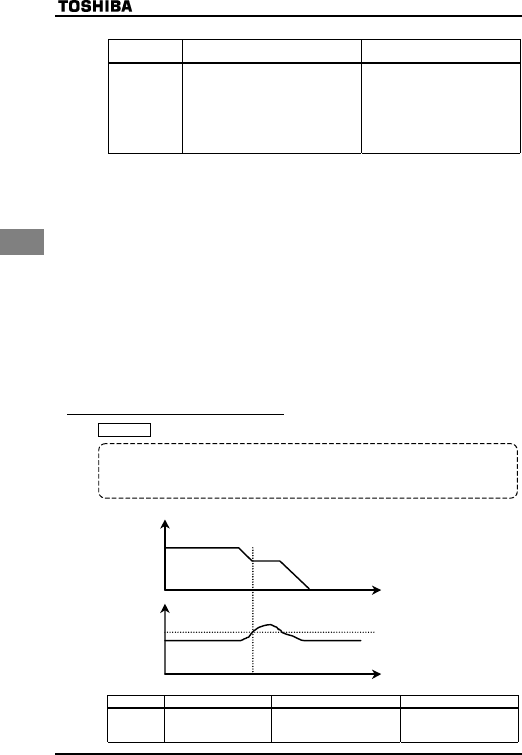
E6581090
F-16
6
Here are typical causes of tripping and the corresponding retry processes.
Cause of
tripping
Retry process Canceling conditions
Momentary
power failure
Overcurrent
Overvoltage
Overload
Up to 10 times of retry in succession
1st retry: About 1 sec. after tripping
2nd retry: About 2 sec. after tripping
3rd retry: About 2 sec. after tripping
⋅
⋅
⋅
10th retry: About 10 sec. after tripping
The retry function will be cancelled
at once if:
• Tripping occurs for any reason
other than momentary power
failure, overcurrent, overvoltage
or overload.
• The motor does not restart within
the specified number of times.
★The retry function is not activated if tripping is caused by one of the following:
・QEC : Arm overcurrent at start-up
・QEN : Overcurrent on the load side at start-up
・GRJQ : Output open-phase failure
・G : External tripping stop
・WR : Undervoltage stop
・GH : Ground fault trip
・GRJK : Input open-phase failure
・GTT : Main body RAM fault
・GTT : Main body ROM fault
・GTT : CPU fault
・GTT : Remote control error
・GTT : Driver fault
・GGR : EEPROM fault
★Protective operation detection relay signals (FLA, FLB and FLC terminals) are not sent during the
retry process.
★A virtual cooling time is provided for overload tripping (QN, QN), so that the retry process is
started after the virtual cooling time and retry time.
★In the case of overvoltage tripping (QR~QR), tripping may recur unless the DC voltage falls
below a predetermined level.
★In the case of overheating tripping (QJ), tripping may recur unless the internal temperature of the
inverter falls below a predetermined level, since the internal temperature is monitored.
★Even if trip retention selection parameter (H) is set to 1, the retry function is enabled if the
number of times of retry is set with H.
★During the retry process, the message “TVT[” and the item specified with the status monitor
selection parameter H are displayed alternately.
6.10.4 Avoiding overvoltage tripping
H
: Over voltage limit operation
• Function
This parameter is used to keep the output frequency constant or increase the frequency to
prevent overvoltage tripping due to an increase in DC voltage during deceleration or constant-
speed operation. The deceleration time may be prolonged during overvoltage limit operation.
Overvoltage limiting level
DC voltage
Output
frequency
Overvoltage limiting level
[Parameter setting]
Title FunctionAdjustment rangeDefault setting
H
Over voltage limit
operation
0: Enabled, 1: Disabled,
2: Enabled (forced quick
deceleration)
0


















